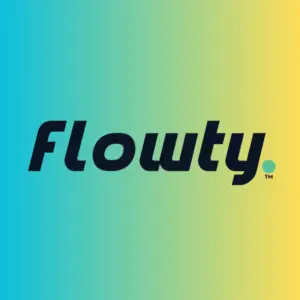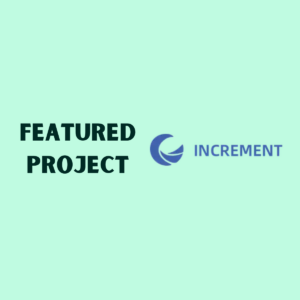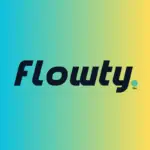Web3 development has come a long way in the past few years, and Flow continues to set itself apart with its developer-friendly infrastructure, smart contract security, and low-cost transactions. But just like any thriving ecosystem, the right tools make all the difference.
If you’re building on Flow in 2025, whether it’s an NFT marketplace, a DeFi app, or a metaverse experience, you need the best resources at your disposal. Below is a hand-picked list of the most essential tools to make your development process smoother, more efficient, and future-proof.
1. Flow CLI – The Foundation of Flow Development
If you’re working on Flow, this is your starting point. The Flow CLI (Command Line Interface) is an indispensable tool for managing accounts, deploying contracts, running local tests, and interacting with the blockchain.
Why it’s essential:
- Deploy and update Cadence smart contracts with ease.
- Run a local emulator for quick testing.
- Automate transactions and script execution.
Install it here: https://developers.flow.com/tools/flow-cli
2. Cadence Playground – The No-Setup Smart Contract Environment
Flow’s Cadence Playground is the easiest way to experiment with smart contracts without setting up a full development environment. It’s a browser-based IDE designed specifically for Flow’s resource-oriented programming model.
Why it’s essential:
- Write, test, and deploy Cadence smart contracts directly from your browser.
- Collaborate in real-time with other developers.
- Perfect for learning before moving to live deployments.
Try it here: https://play.flow.com
3. FCL (Flow Client Library) – The Key to User-Friendly Dapps
User experience matters. Flow Client Library (FCL) simplifies the process of integrating wallets, handling authentication, and interacting with the blockchain—all without sacrificing security.
Why it’s essential:
- Easily connect Blocto, Dapper, Lilico, and other Flow wallets.
- Streamlined authentication flow.
- Secure transaction signing and execution.
4. Flow Emulator – Test Your Dapp Locally, Risk-Free
Before deploying on Flow Testnet or Mainnet, you need a sandbox environment. The Flow Emulator allows you to test transactions, contracts, and interactions locally, making debugging far more efficient.
Why it’s essential:
- Simulate real blockchain behavior without paying for transactions.
- Test different user scenarios before deploying.
- Integrate seamlessly with Flow CLI.
5. Flow VS Code Extension – Make Cadence Development Easier
For those using Visual Studio Code, the Flow VS Code Extension is a must. It enhances Cadence development by offering syntax highlighting, auto-completion, and debugging tools.
Why it’s essential:
- Speeds up smart contract development.
- Reduces syntax errors and provides Cadence-specific linting.
- Direct integration with Flow CLI for smoother workflows.
6. Emergent Labs API – Simplifying NFT & Token Interactions
For developers building NFTs, marketplaces, and DeFi applications, Emergent Labs API provides pre-built smart contract functionalities and easy integration.
Why it’s essential:
- Simplifies NFT minting, transfers, and metadata management.
- Supports multi-chain compatibility for cross-platform interactions.
- Saves hundreds of development hours by offering plug-and-play solutions.
7. Find.xyz – The Flow Name Service for Web3 Identities
Find.xyz is Flow’s answer to ENS (Ethereum Name Service), allowing developers to create human-readable wallet addresses and build decentralized identity systems.
Why it’s essential:
- Enables user-friendly wallet addresses (e.g., ryan.find).
- Integrates with Flow apps for seamless user authentication.
- Supports custom profiles, metadata, and reputation scoring.
8. GraphQL API for Flow – Query Data Without the Complexity
For developers working with NFT marketplaces, analytics tools, or DeFi dashboards, the GraphQL API for Flow simplifies querying blockchain data without excessive RPC calls.
Why it’s essential:
- Retrieve NFT metadata, account balances, and transaction history instantly.
- Faster and more efficient than raw blockchain queries.
- Works seamlessly with FCL and other Flow tools.
9. IncrementFi – The Go-To DeFi Tool for Flow
Flow’s DeFi ecosystem is growing, and IncrementFi is leading the charge. Whether you’re developing staking, lending, or liquidity protocols, this is your go-to DeFi toolkit.
Why it’s essential:
- Provides pre-built liquidity pool smart contracts.
- Supports yield farming and decentralized lending.
- Fully compatible with Flow’s secure transaction model.
Start using IncrementFi: https://increment.fi
10. Flowty – Unlock NFT Liquidity on Flow
One of the biggest challenges in NFT ecosystems is liquidity. Flowty allows developers to build applications that enable NFT lending, borrowing, and peer-to-peer financing.
Why it’s essential:
- Adds DeFi utility to NFT projects.
- Users can borrow against NFTs instead of selling.
- Creates new financial mechanisms for Web3 apps.
Final Thoughts
Flow has cemented itself as one of the most developer-friendly blockchains, and in 2025, the tools available to builders have never been stronger. Whether you’re working on a Dapp, DeFi product, NFT marketplace, or a metaverse experience, these tools will give you the best chance of success.
The Flow ecosystem is growing fast, and the builders who take advantage of these tools will be the ones leading the next wave of Web3 innovation.















